Remembering the climate change election
Well, for Australia tomorrow is it. The time we’ve been waiting for. A federal election.
And it’s been reminding me of the last federal election - exactly three years ago, and long before Covid changed everything. It was called “The Climate Change Election” - and yet it returned to power a government with terrible climate credentials.
The initial two terms
At the time of the last election, the Liberal-National Coalition had been in power for nearly six years, and were already on their third leader. This is not exactly a recommendation. And a big contributor to that instability had been the climate wars.
Labor’s policies on climate had for many years been more progressive than those of the Coalition, and they had paid for it electorally. The Abbott government, elected in 2013, made removing Labor’s carbon price one of their top priorities.
A couple of years later, Tony Abbott was replaced as leader by Malcolm Turnbull, generally considered more moderate, but largely unable to advance those moderate policies due to the party’s right (he’s certainly more vocal about climate action now than he ever was in government). In 2016, after a double dissolution and a lengthy election campaign, the Coalition just managed to scrape together a majority.
Fast forward to August 2018, and there was another leadership change. Malcolm Turnbull was removed and replaced as Prime Minister by the then-Treasurer Scott Morrison. This change was also partly due to climate issues - the National Energy Guarantee that Turnbull had been pushing wasn’t guaranteed the support of his own government. Why? Well, partly because it included emissions reduction obligations.
As Prime Minister, Scott Morrison was quick to axe the NEG, continuing to insist that Australia would meet our Paris emissions targets while not providing any clear path to do so. He was the leader of a government which was divided over climate action. And he’d been involved personally - in February 2017, he’d brought a lump of coal into Parliament, and said we shouldn’t be scared of it.
His government was also soon to be a minority government. Remember they only had a one seat majority after the 2016 election? Well, after being removed from office Malcolm Turnbull resigned. In the resulting by-election, his seat was taken by the independent Kerryn Phelps. Then a Liberal MP, Julia Banks, left the Liberal party due to bullying.
Mostly the government continued on in minority, though one of their most bitter losses was over the so-called medevac legislation.
In the lead up to the election
None of this boded well for the Coalition government in the much-talked-of “Climate Change Election”. We had been told that serious action was required by 2030 - only 11 years away. Labor had more ambitious climate targets, as well as many other planned reforms.
For months, the polls had been presenting Labor as the clear winners. There was a feeling of inevitability in the air (though it’s worth noting that internal Labor polls were less positive about their chances).
It seemed to me that if it really were the climate change election, of the two major parties Labor should be the clear winner. They had a more ambitious target than the Coalition, and they promised action by 2030.
In contrast, the Liberal Prime Minister had been directly involved in reducing climate action and pushing for business as usual. And nothing about the Coalition’s leadership instability or the internal divisions over climate action helped their cause.
During the election campaign, we were told that Labor policies on electric vehicles would “end the weekend”. Additionally, that Australia didn’t need to do too much to reduce our emissions because it wouldn’t make much difference anyway (forget that we were one of the highest emitters per capita).
The night before
After work, I talked politics and climate change with some co-workers, then went to a family dinner, then returned home by train. It was just over two years since I’d gone hiking in the Dandenong Ranges under the full moon. I’d cut it short to leave time to actually write the post, and had always intended to go back and do a longer circuit.
I’d already been tempted by the moon earlier in the week. So when I got out of the station I saw the moon was high in the sky and looked nearly full and very beautiful, I set off on a whim. Yes, as a night in May it was somewhat cold, but it started off uphill. I didn’t get home till midnight, but it was worth it.
However, while walking I realised it had been a while since I’d been in that area by day. Before I went to sleep, I had my plan for the morrow: I would walk to a polling station in the hills, cast my vote, then keep on walking. After all, what would be a better way of celebrating the Climate Change Election than walking to it through a national park?
Election Day
The day started with one of our beautiful birds:
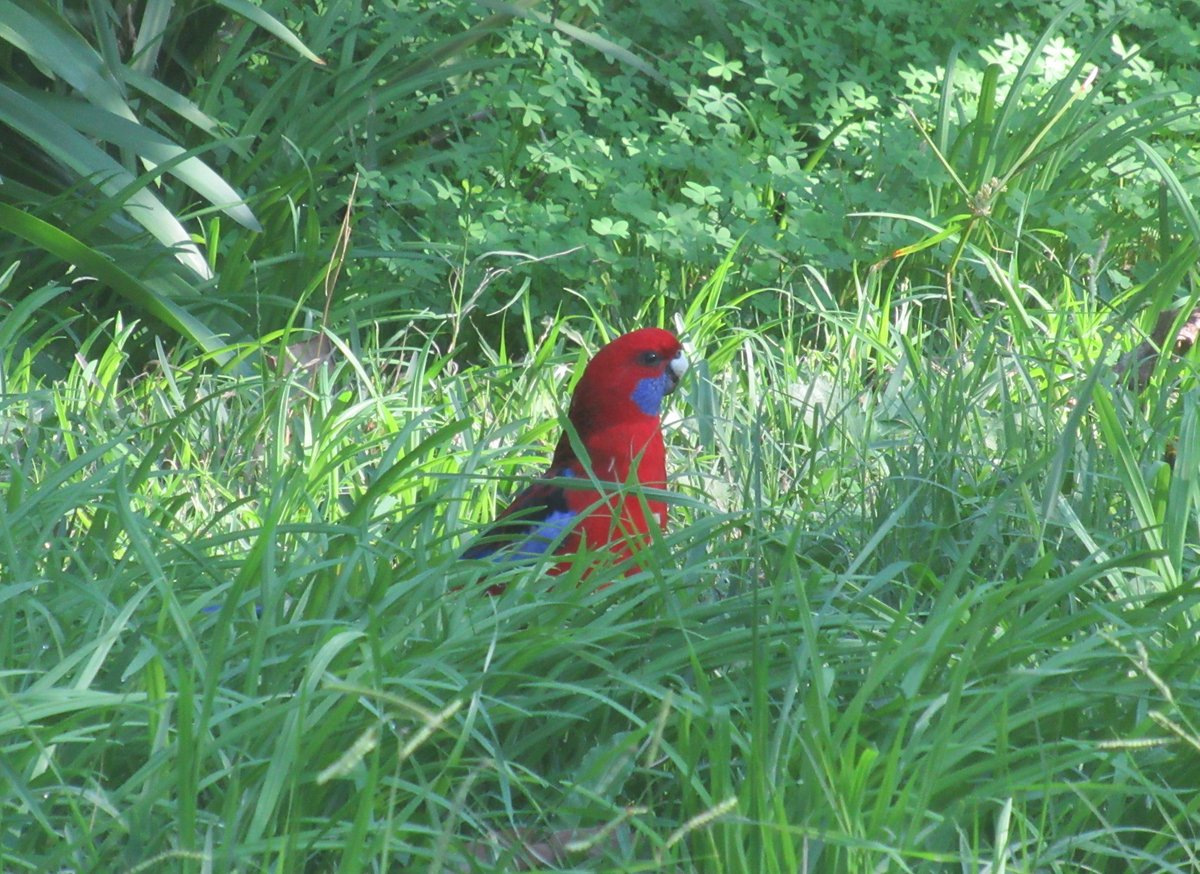
And it was a lovely autumn day with plenty of colourful leaves to admire:
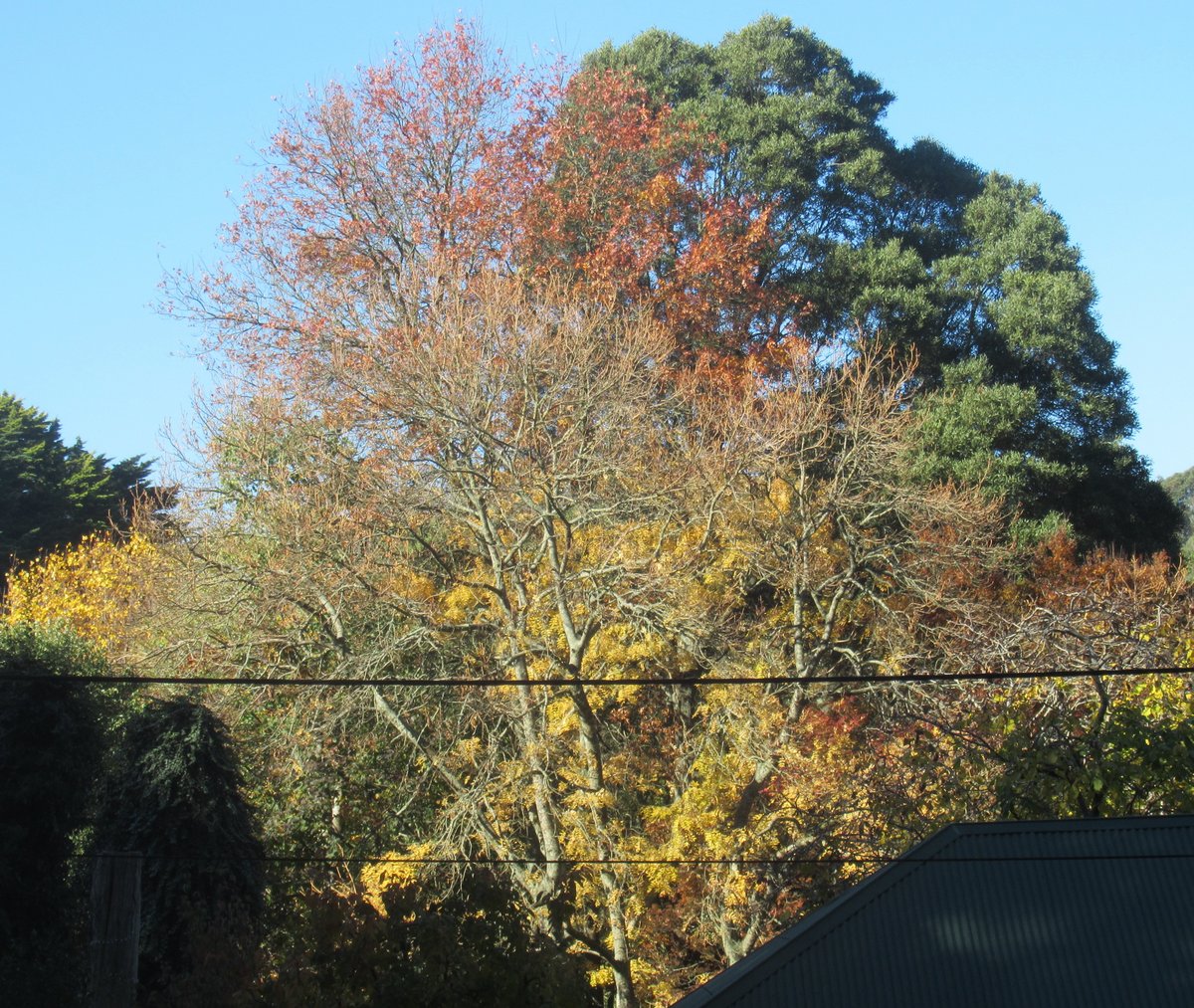
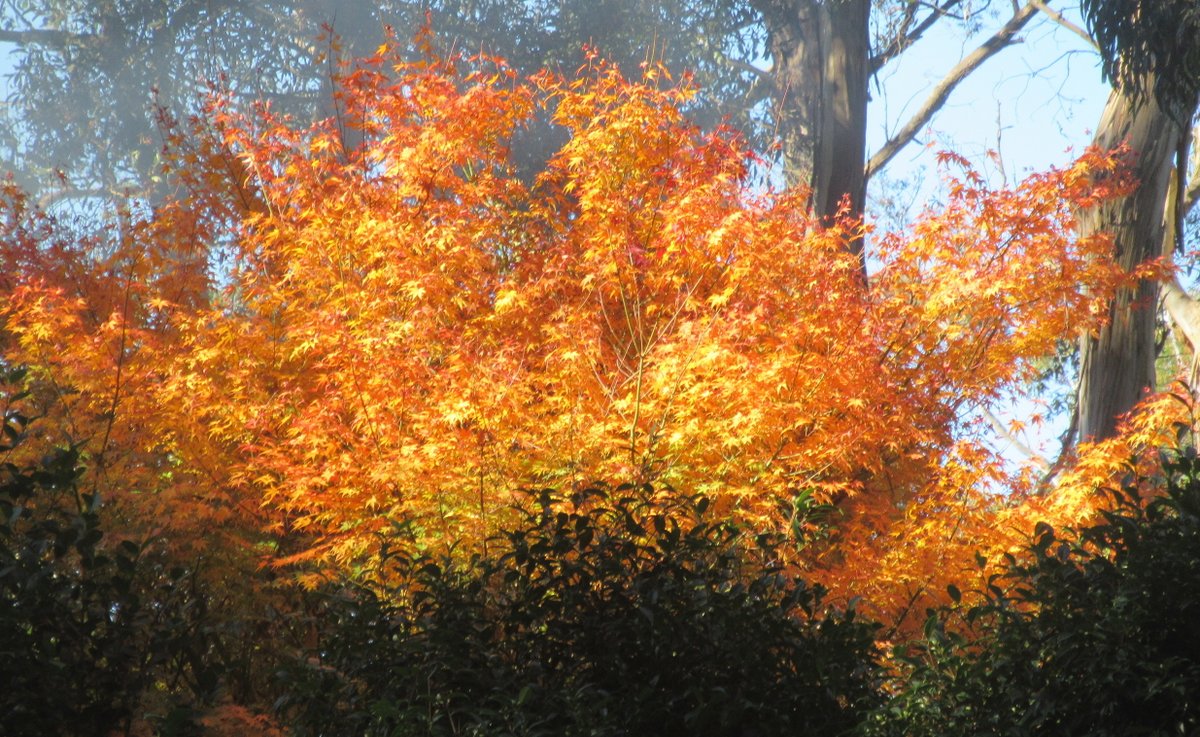
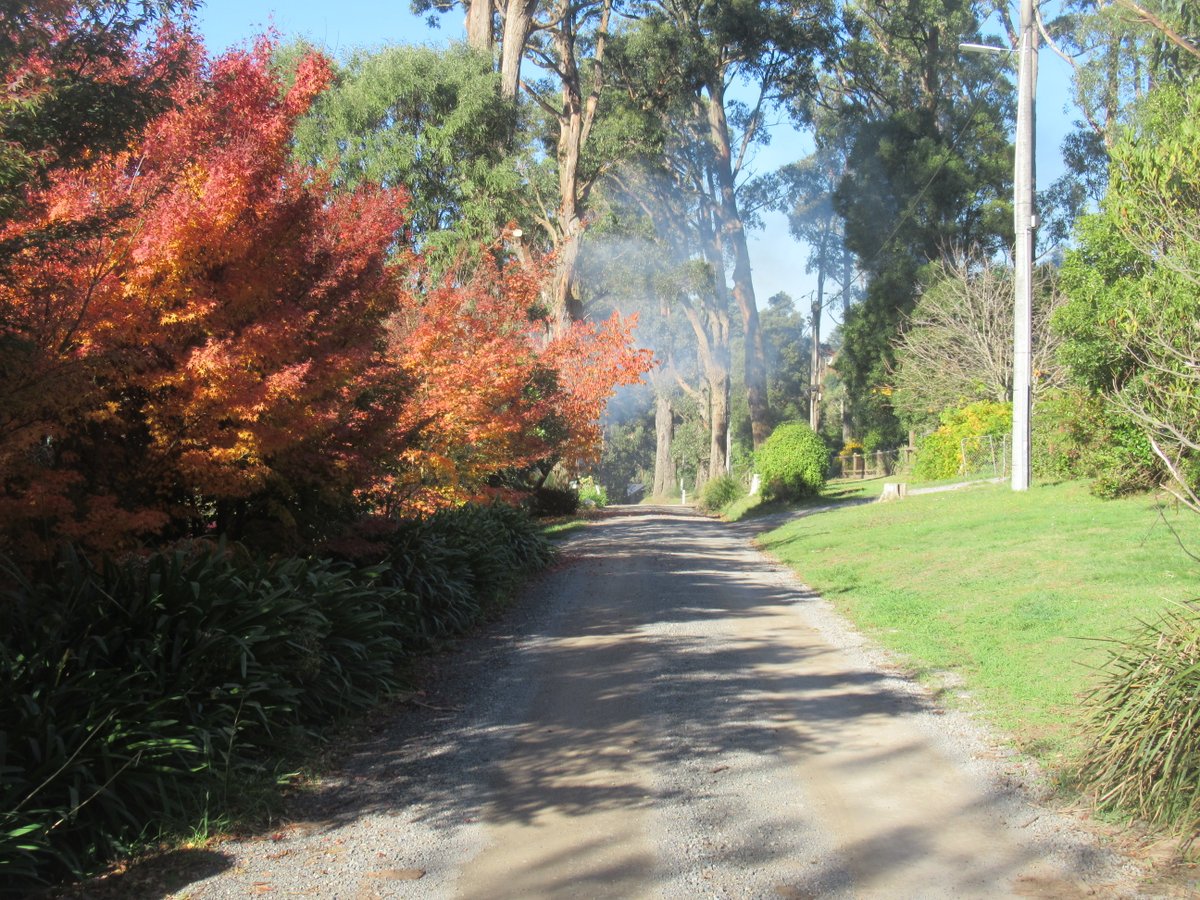
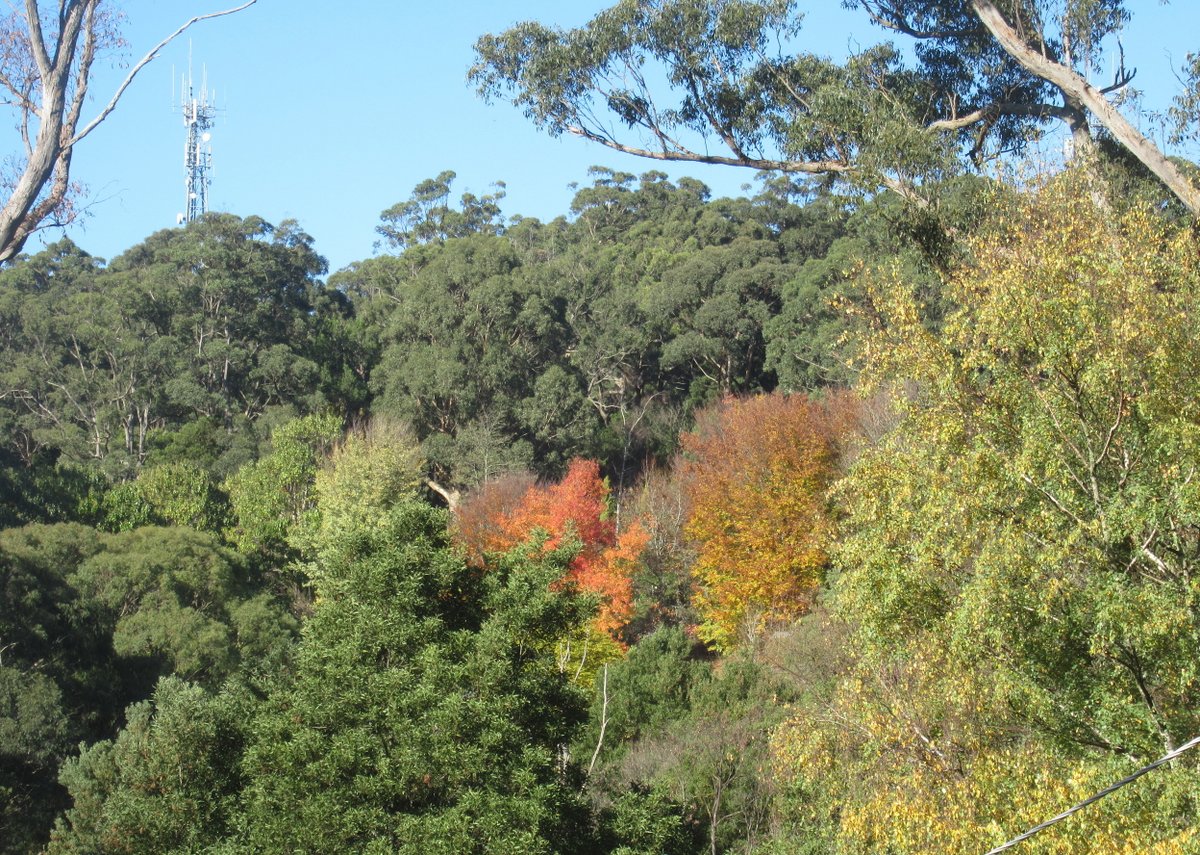
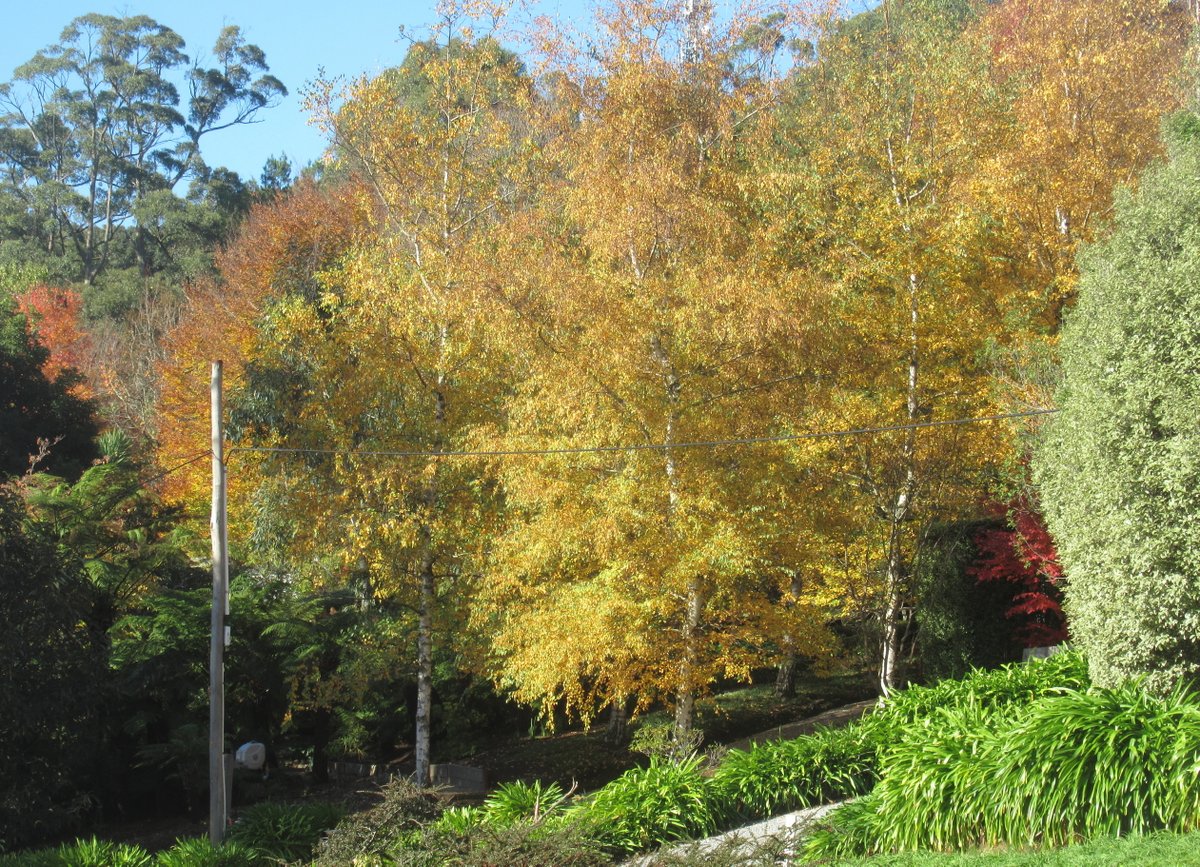
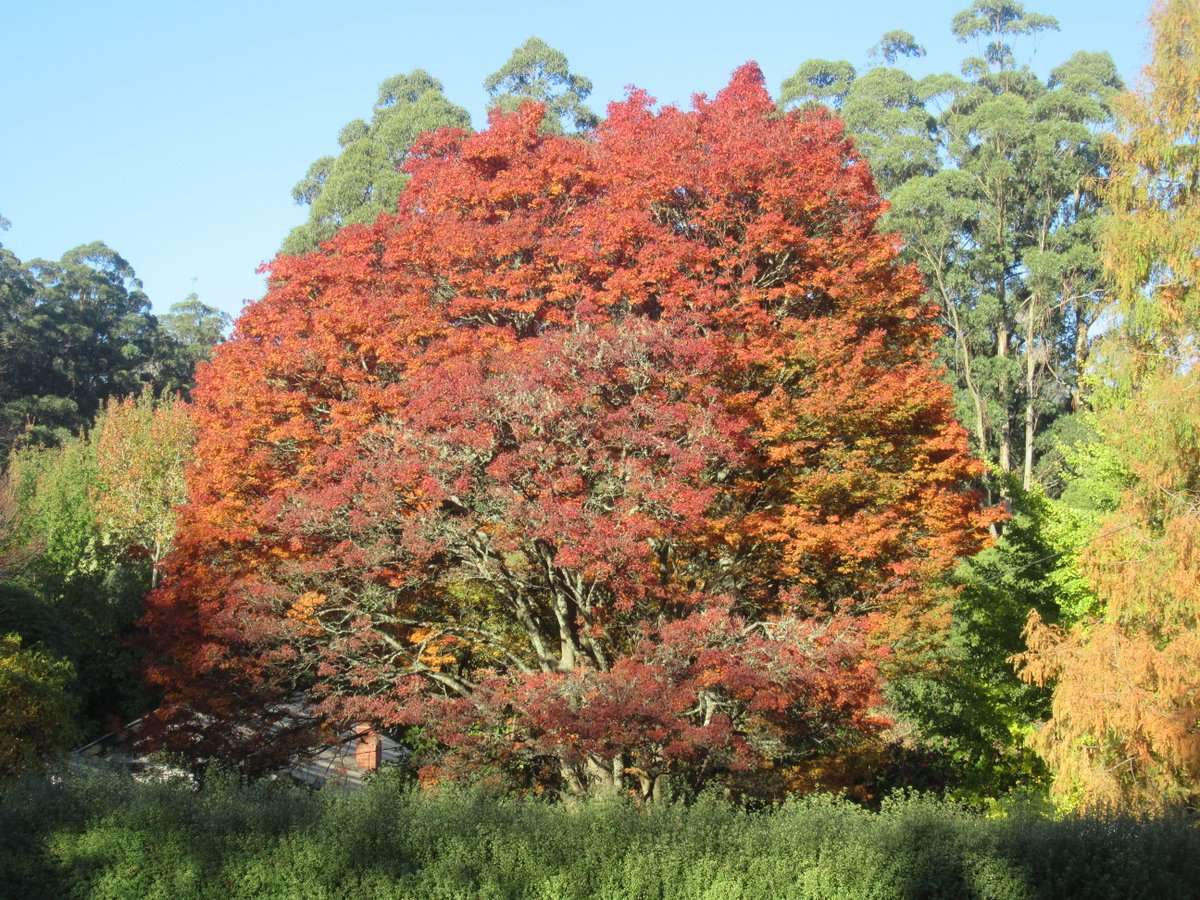

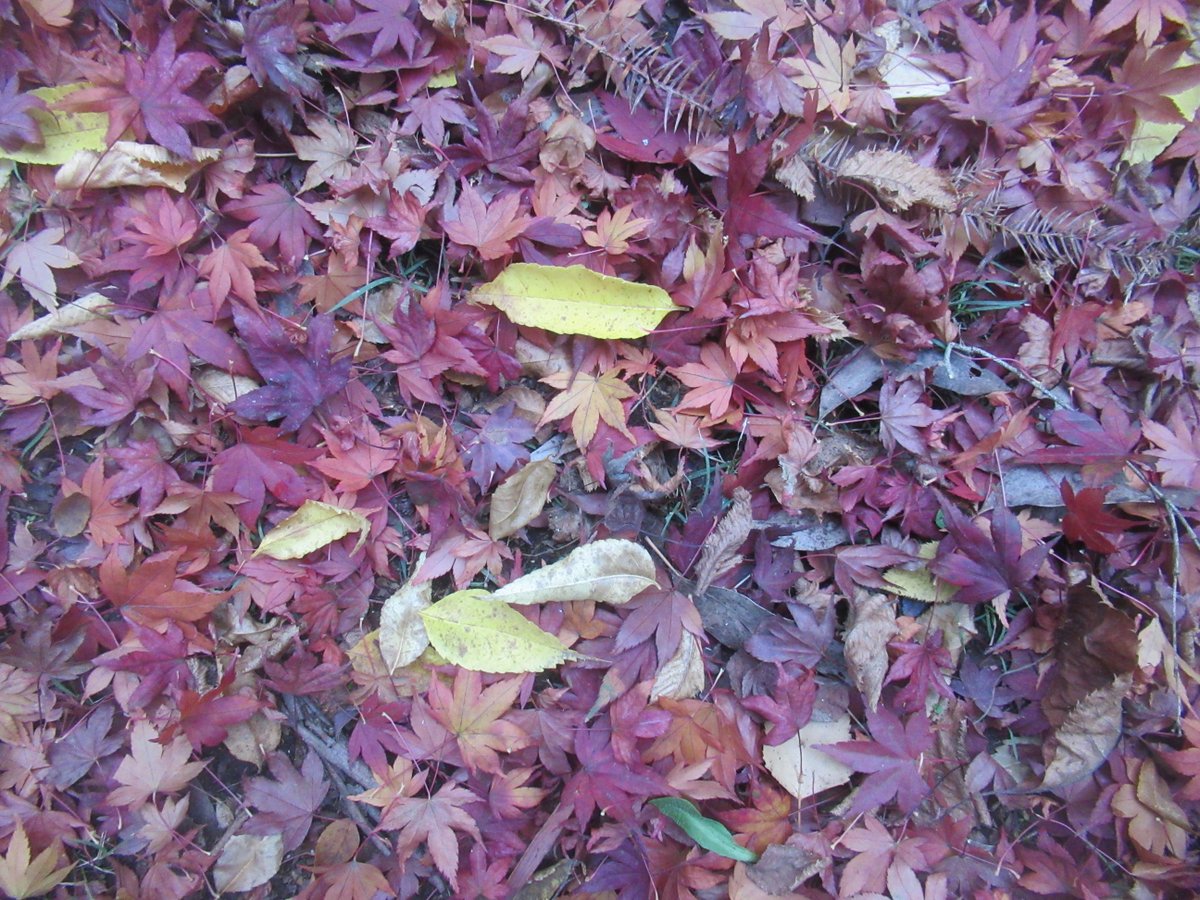
Each of those trees was busy capturing and storing carbon. And managing to look beautiful at the same time. That’s a good thing - right?
It wasn’t just autumn leaves, though. Right near the school doubling as a polling station, I found this view:
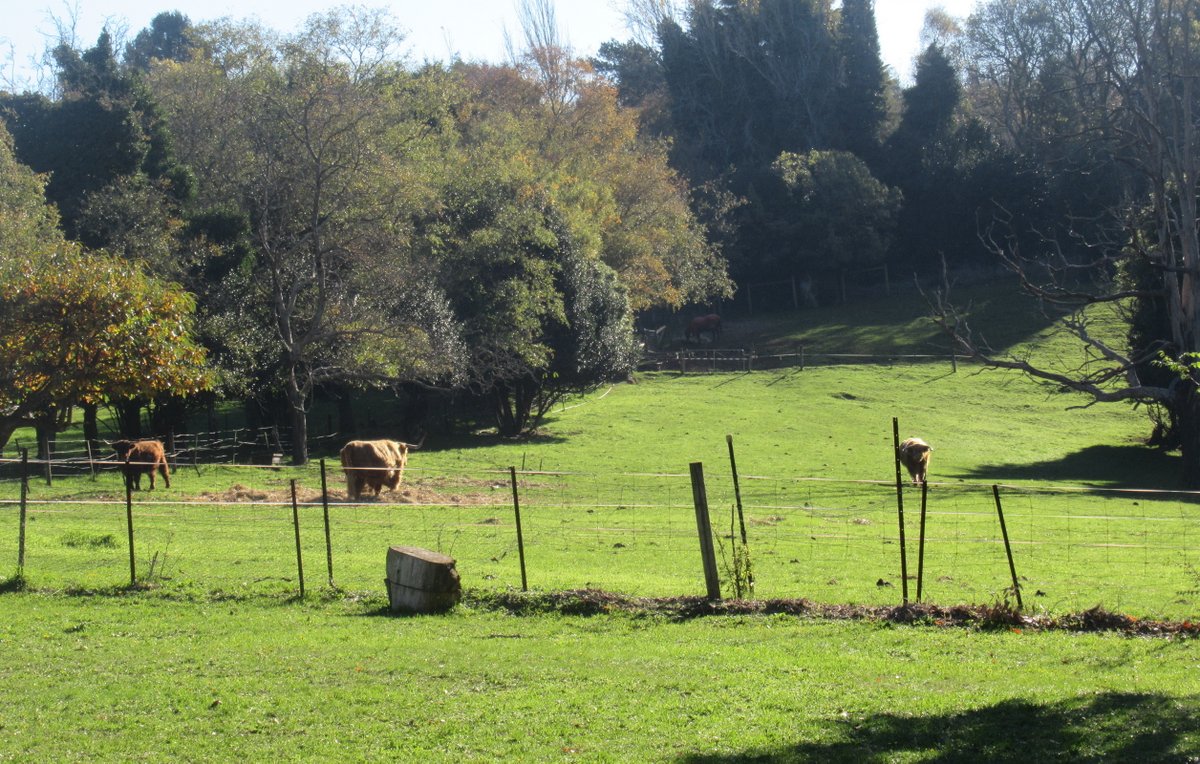
It’s a pastoral scene that makes a refreshing change from city life.
I’ve lived in the Dandenong Ranges for ten years now, so I might be a little biased, but I think it’s one of the most beautiful parts of Melbourne. Taking a long walk through it made for a fun day personally, and I wanted to share some of the beauty I experienced.
The results come in
Then I got home. And as the results started to come in it quickly became clear that Labor wouldn’t be able to form government.
It reminded me both of the Brexit vote and Trump’s election: The polls had tightened, but a Labor victory had been taken as a near certainty for so long that it was difficult to accept anything else.
This election was supposed to be the climate change election. We’d been hearing for a while that more action was needed, and the next decade would be crucial. And yet we returned to government a government that had already had six years, and in that time had been torn by infighting over climate action and achieved little.
By the end of the day it wasn’t clear whether the Coalition could achieve a majority, but as it turned out they did - just. And that led some in the party to call it a miracle. But I think that’s overstating it.
Yes, they defied widespread expectation of a Labor win. But they had also started off in 2016 with a slight majority, squandered it to become a minority government, then once more scraped together a slight majority (which, I’ll note, had become a minority government again before the current election).
The post-mortem
There has been a lot of analysis on what caused Labor to lose. And one of the things was their climate policy - it probably played better in city Victoria than in, say, rural Queensland.
On election day I saw this at a bus stop near the polling station:
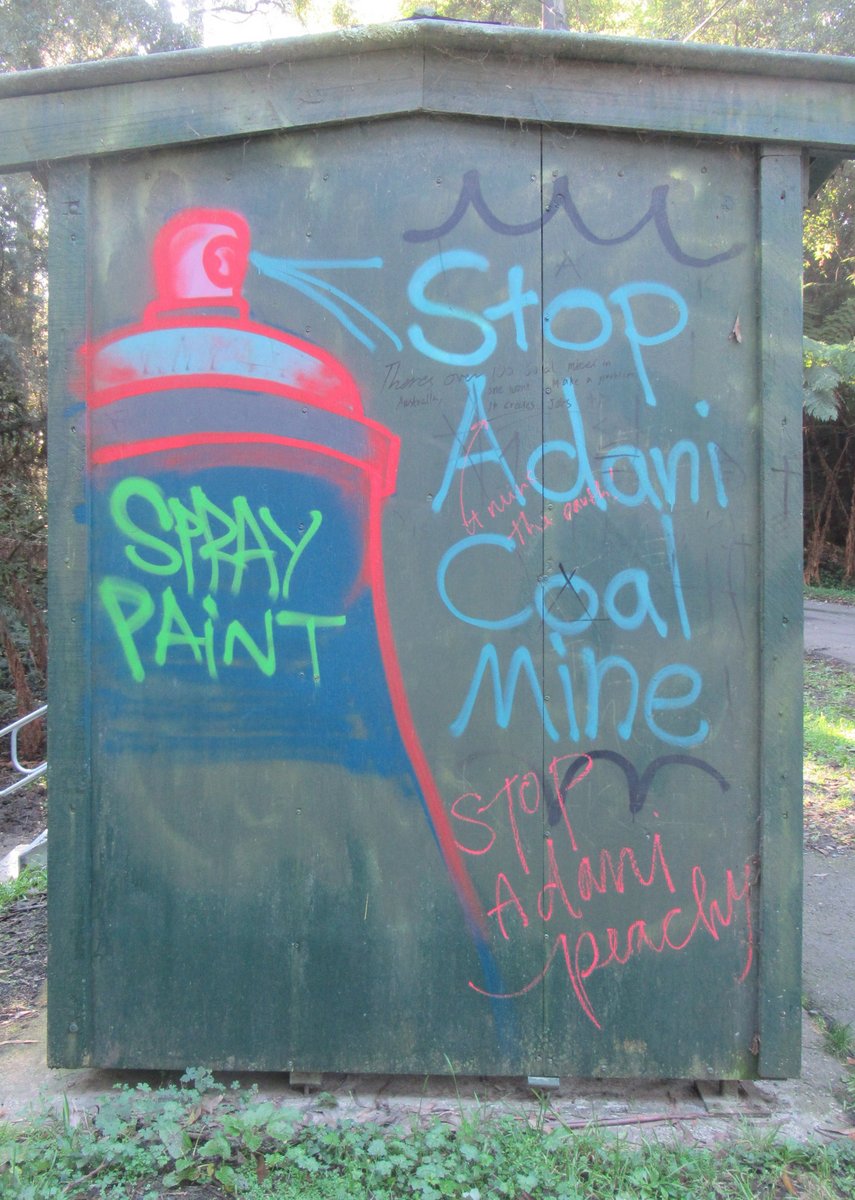
I don’t think it’s talked about so much nowadays, but it was a big deal back then. It was a new coal mine that was to be the biggest coal mine in Australia. Plus it would use significant groundwater and threaten the nearby Great Barrier Reef. But it provided jobs, so that was OK - right? Anyway, the Coalition government had rushed approval of it before the election.
And at some point during the election campaign there was an anti-Adani convoy. There was talk of this upsetting Queenslanders, who felt like it was southerners coming up trying to tell them how to live their life. The convoy was more associated with the Greens, so it’s not clear how much that affected Labor’s chances.
However, Labor had their own difficulties with the mine - in order to win the seats they needed, they had to be seen as pro-mining in Queensland, and anti-mining in inner city seats. The Coalition were good at attacking this. Large parts of Queensland swung to the Coalition, and that made a big difference to the final result.
There were significant parts of the electorate where the “Stop Adani!” message played well, and I personally think we would be much better off without that mine. But it didn’t play so well in Queensland.
This is a more general problem: It’s hard building a coalition of half the seats in a country. You need to figure out ways to appeal to different voters with very different social contexts and needs and desires. You need to figure out which things to compromise on to be electable, and which things to stand on principle. The choices made to try and appeal to one group could turn away people in another group.
I like many of the Greens’ policies, but the reality is that a lot will have to change before they even get 5% of the seats, let alone 50%. They can be a power in the Senate, but it’s hard to see them in government. Even with Labor, I liked many of Labor’s more ambitious policies in 2019, but they probably contributed to a Coalition victory.
Some of the non-climate reasons for the Labor loss often suggested were:
-
The so-called retiree tax: In my opinion, this was good policy, and most definitely wasn’t a tax (it was removing an expensive loop-hole that arguably should never have been there). However, it turned out to make a very good scare campaign. In fact, the Liberals are still running scares on it this election, despite Labor quickly dumping it after the 2019 election for fear it made them unelectable.
-
Clive Palmer & the United Australia Party: In the lead-up to the election many, including me, got sick of the yellow UAP ads everywhere. They spent over $80 million - far more than all other parties put together. Initially talked confidently of forming government, though I don’t know if many actually believed them.
As it turned out, they didn’t win any seats, but many of their preferences flowed to the Coalition. That’s thought to have made a difference in tight seats, particularly in Queensland. And Clive Palmer later took credit for his advertisements preventing a Labor government.
This time round, UAP have once again spent big on advertising. In the Covid era they’ve also to a fair extent rebranded themselves as the anti-vaxx, anti-lockdown party. It’s not clear how much that will change things, but there has been a lot of discontent which I think they are well placed to tap into. Whether that actually gives them any power I’m not sure. But it again seems likely that more of their preferences flow to the Coalition.
-
A matter of trust: At the last election, polls showed that Scott Morrison was significantly more trusted than Labor leader Bill Shorten. In the final analysis, his campaigning was credited in getting the Coalition just over the line. Personally, I didn’t understand it.
Bill Shorten was talking about making opportunities available to all. Scott Morrison was just very effective at deflecting questions he didn’t want to answer. In particular, I thought the Liberal leadership instability mattered - it wasn’t just a “Canberra bubble” question, but was fundamental to their climate credentials (or lack of them…).
This one has changed. After a full term Scott Morrison is a known quantity, and as a result he seems to be much less trusted and liked. This has meant in many electorates he just doesn’t get mentioned. That includes my electorate - I’ve seen Anthony Albanese, the Labor leader, mentioned in numerous attack ads. But I don’t believe Morrison has ever been mentioned - the closest the Liberal candidate has come to him is talking about the achievements of “the Liberal government”.
As a result of all that, after the election Labor shelved most of their ambitious policies, and instead have been trying to run as a small target. This has also meant on many things they’ve basically adopted the Liberal position to save themselves from attack. I don’t really like that, but can see some sense to it. As above, the party with the best policies in the world probably won’t achieve much if those policies prevent them from actually gaining power.
A personal response
Before the last election, I said it was important to have a government response on climate, and that encouraging people to take “personal responsibility” is a cop-out. I still believe this - I think Covid has only made it more clear that “personal responsibility” is not the best response to a community problem.
However, when the much-talked-of climate change election led to the re-election of our current government, I felt like I needed to do something in response. So what did I do? I changed electricity provider. I increased my donations to some climate-related charities, in particular those aiming to protect Australia’s unique native animals.
Could I do more? I expect so - and perhaps I should. But my point still stands: Like so many others, I live as a relatively normal individual in one of the largest cities in Australia. I would hope that in many ways my consumption is lower than the average - but that is still relative to that Australian baseline. I think there is far more benefit in trying to move that baseline - for the entire society - rather than relying on individuals choosing to move away from that baseline. And that is the thing that Labor have consistently tried to do more than the Coalition.
And now for the Absolutely-Definitely-Not-Climate-Change Election
So, tomorrow it’s election time again. Many have already cast early votes, but there are still a lot of votes to count. Much has changed since the last election, but much has also stayed the same.
Climate policy is repeatedly listed as one of the most important issues for voters, and yet the major parties don’t seem to be talking about it as much. Albanese says electing Labor will put the climate wars behind us. That would probably be a good thing, but given the history of climate action in Australia I think it unlikely (though we’re now in the curious position that the Business Council of Australia, which last time attacked Labor’s 2030 target, now calls for a higher target than either party have committed to).
One group that has been talking about climate has been the so-called “teal independents”. And I’m very curious to see how they go. They call for bolder climate action, and seem to be a genuine chance in some moderate Liberal seats.
I work in Kooyong, the seat of Josh Frydenberg, Treasurer of Australia and as a result arguably Liberal second-in-command (incidentally, he has also argued for climate action for economic reasons). There are billboards and signs everywhere both for him and for Dr Monique Ryan, the independent challenger. If he and a few other Liberals lose their seats to independents, it could have a significant effect on the party as a whole.
But in the area there are also signs like this:
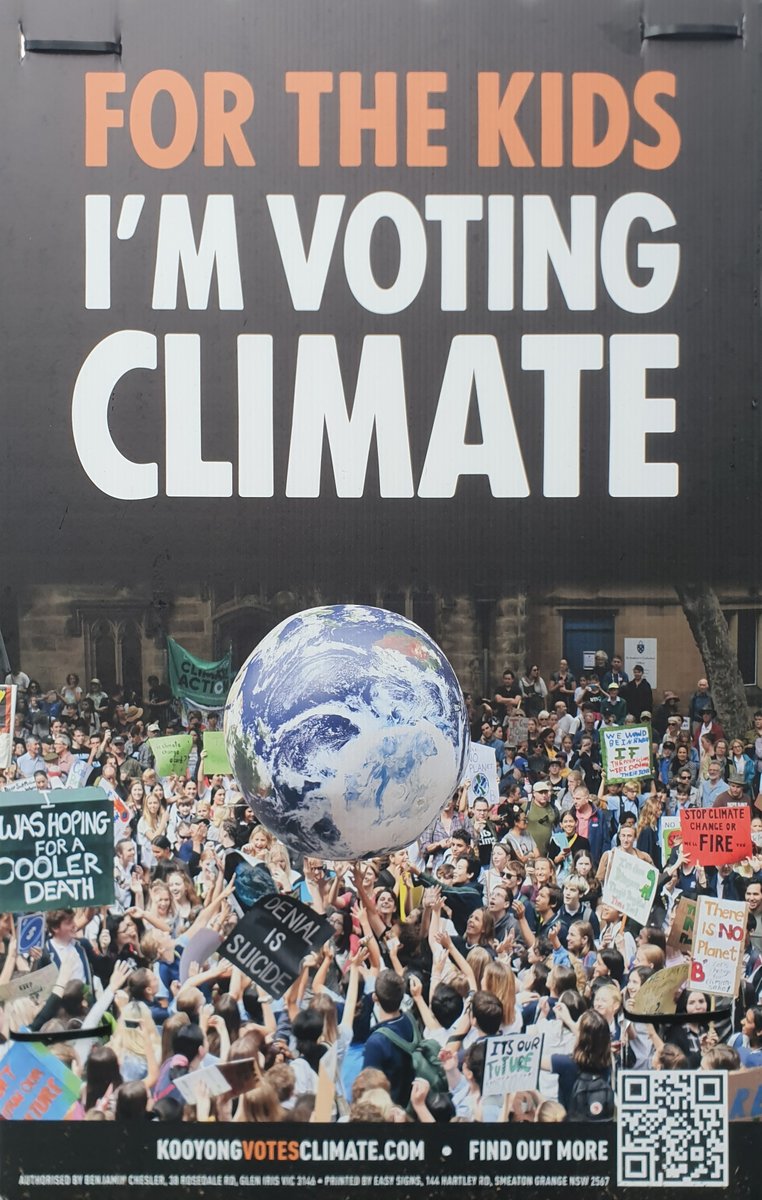
We have a government that talked for a very long time about the importance of balanced budgets and of achieving a surplus. They even claimed they had one, though it didn’t quite materialise before the Covid era required massive spending. And one of their arguments for a surplus is that increasing debt isn’t fair because it shifts the burden to our youth. However, I would argue that their climate policies are shifting a very different burden to our youth.
I intended to write another post about some of what we’ve seen in the last three years, but since I’m obviously not going to get to it, I’ll sum it up here. To me, it started with the Coalition campaigning to repeal the medevac legislation - an action which seemed to show that, for them, the cruelty was the point.
During the terrible bushfire season of 2019/20, I thought the Coalition would have to take a more serious position on climate. Then just about everything got swept aside by Covid.
Extraordinary things happened during those years. The federal government banned most Australians from leaving Australia, and also told long-term residents of Australia that they should “go home”. The state premiers proved to have far more power than expected, and Australia largely closed our borders to people coming in - including Australians overseas. There was also a mass vaccination program on a scale I’m not sure we’ve seen before, leading to the federal government being widely (and, in my view, somewhat unfairly) criticised for deficiencies in the vaccine roll-out.
The surplus vanished in a rush of stimulus measures, but the federal government were always looking to push economic recovery on the (somewhat-mythical-seeming) other side. And their recovery plan called for a “gas-led recovery” - hardly the most climate-conscious approach.
They couldn’t completely avoid climate, though: Last year was the Glasgow climate conference. At a time when many nations were strengthening commitments for 2030, here in Australia frantic negotiations with the minor Coalition partner just about got them to accept the goal of net zero by 2050. Not that the government then developed a clear path to it: Their position is “Technology, not taxes”, which sounds to me a lot like “If we ignore the problem for now, surely some magic will come along to save us later?” One description I saw of the plan is that it “may as well have been written in crayon”.
Remember the bushfires before Covid? Well, this year massive massive floods in NSW and Queensland have revived many of the same climate concerns.
My problem with the government isn’t just about climate, though - on the culture wars side, there were attempts at “religious freedom” that turned out to be attacks on transgender people. Which gained new strength during the election campaign when Morrison supported and amplified an anti-trans candidate.
And if I spent more time I’m sure I’d remember more problems. Fundamentally, though, my position is much the same as last election. Then I said the Coalition government had had nearly six years in power and didn’t deserve more. Now it’s nearly nine years.
If the election were just about climate I think Labor have better climate policies than the Coalition, and are a more credible voice on climate than the Coalition. But it’s not just about climate.
Yes, Labor have adopted many Coalition policies to make themselves a smaller target, and I preferred the ambitious Labor of 2019. But I believe the Coalition have shown themselves unfit to govern. I don’t know exactly what a Labor government would look like, but I think they would be better than a re-elected Coalition government.